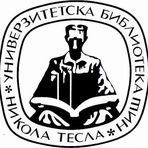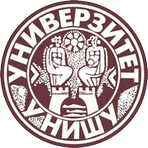Title
Uticaj erector spinae plane bloka na kliničko-metaboličke parametre kod pacijentkinja podvrgnutih radikalnoj hirurškoj intervenciji karcinoma dojke
Creator
Nikolić, Aleksandar, 1989-
CONOR:
109323785
Copyright date
2024
Object Links
Select license
Autorstvo-Nekomercijalno-Bez prerade 3.0 Srbija (CC BY-NC-ND 3.0)
License description
Dozvoljavate samo preuzimanje i distribuciju dela, ako/dok se pravilno naznačava ime autora, bez ikakvih promena dela i bez prava komercijalnog korišćenja dela. Ova licenca je najstroža CC licenca. Osnovni opis Licence: http://creativecommons.org/licenses/by-nc-nd/3.0/rs/deed.sr_LATN. Sadržaj ugovora u celini: http://creativecommons.org/licenses/by-nc-nd/3.0/rs/legalcode.sr-Latn
Language
Serbian
Cobiss-ID
Theses Type
Doktorska disertacija
description
Datum odbrane: 09.12.2024.
Other responsibilities
Academic Expertise
Medicinske nauke
University
Univerzitet u Nišu
Faculty
Medicinski fakultet
Group
Katedra za radiologiju, nuklearnu medicinu i osnovi kliničke onkologije
Alternative title
The impact of erector spinae plane block on clinical-metabolic parameters in patients undergoing radical surgical intervention for breast cancer
Publisher
[A. N. Nikolić]
Format
136 lista
description
Beleška o autoru: list 136
Bibliografija: listovi 115-135
description
Anesthesiology, reanimatology, and intensive care
Abstract (en)
Introduction: Breast cancer is the most common malignant tumor in women, and surgical intervention is a key component of treatment. Postoperative pain is a common issue, with around 60% of patients experiencing severe acute pain. Recent advancements in regional anesthesia, such as the erector spinae plane block (ESPB), have shown potential in reducing postoperative pain and improving clinical outcomes. This study investigates the impact of ESPB on clinical-metabolic parameters in patients undergoing radical surgical intervention for breast cancer.
Objective: The aim of this study is to determine whether ESPB can reduce postoperative pain, inflammatory response, and influence metabolic reactions in patients with breast cancer. The specific objectives include assessing differences in vital clinical parameters, levels of endocrine stress, metabolic homeostasis, suppression of the inflammatory response, the amount of medication used during surgery, and the degree of pain after surgery.
Patients, Materials and Methods:The study included 48 patients (aged 50-65 years) with breast cancer, undergoing modified radical surgical intervention. The study was approved by the Ethics Committee and conducted at the University Clinical Center Niš. Patients were randomly assigned into two groups: one with general anesthesia (OETA), and the other with general anesthesia and erector spinae plane block (OETA+ESPB). Clinical, inflammatory, metabolic, and endocrine parameters, as well as postoperative pain, were monitored. Statistical data analysis was performed using SPSS 16.0.
Results: Patients in the OETA+ESPB group had lower postoperative pain according to the VAS scale and reduced analgesic consumption. Inflammatory markers (IL-6, CRP) and stress hormones (cortisol, adrenaline) were significantly lower in the OETA+ESPB group. Clinical parameters (heart rate, blood pressure) were more stable during surgery in this group. Statistical analysis showed a significant difference in favor of the OETA+ESPB group in all monitored parameters, indicating the effectiveness of the erector spinae plane block in reducing postoperative pain and stress.
Conclusion: Based on our research, it can be concluded that the combination of general anesthesia and ESPB significantly reduces postoperative pain, the need for analgesics, and surgical stress in patients with breast cancer. ESPB contributes to better control of metabolic parameters, hemodynamic stability, and reduces inflammatory response. These results suggest that ESPB can improve postoperative recovery
and care quality, and its routine application could enhance treatment outcomes for breast cancer patients. Further research is needed to assess long-term effects.
Authors Key words
erector spinae plane blok (ESPB), karcinom dojke, hirurški stres, postoperativni bol
Authors Key words
erector spinae plane block (ESPB), breast cancer, surgical stress, postoperative pain
Classification
618.19-006.6:616-089.5(043.3)
Subject
B590
Type
Tekst
Abstract (en)
Introduction: Breast cancer is the most common malignant tumor in women, and surgical intervention is a key component of treatment. Postoperative pain is a common issue, with around 60% of patients experiencing severe acute pain. Recent advancements in regional anesthesia, such as the erector spinae plane block (ESPB), have shown potential in reducing postoperative pain and improving clinical outcomes. This study investigates the impact of ESPB on clinical-metabolic parameters in patients undergoing radical surgical intervention for breast cancer.
Objective: The aim of this study is to determine whether ESPB can reduce postoperative pain, inflammatory response, and influence metabolic reactions in patients with breast cancer. The specific objectives include assessing differences in vital clinical parameters, levels of endocrine stress, metabolic homeostasis, suppression of the inflammatory response, the amount of medication used during surgery, and the degree of pain after surgery.
Patients, Materials and Methods:The study included 48 patients (aged 50-65 years) with breast cancer, undergoing modified radical surgical intervention. The study was approved by the Ethics Committee and conducted at the University Clinical Center Niš. Patients were randomly assigned into two groups: one with general anesthesia (OETA), and the other with general anesthesia and erector spinae plane block (OETA+ESPB). Clinical, inflammatory, metabolic, and endocrine parameters, as well as postoperative pain, were monitored. Statistical data analysis was performed using SPSS 16.0.
Results: Patients in the OETA+ESPB group had lower postoperative pain according to the VAS scale and reduced analgesic consumption. Inflammatory markers (IL-6, CRP) and stress hormones (cortisol, adrenaline) were significantly lower in the OETA+ESPB group. Clinical parameters (heart rate, blood pressure) were more stable during surgery in this group. Statistical analysis showed a significant difference in favor of the OETA+ESPB group in all monitored parameters, indicating the effectiveness of the erector spinae plane block in reducing postoperative pain and stress.
Conclusion: Based on our research, it can be concluded that the combination of general anesthesia and ESPB significantly reduces postoperative pain, the need for analgesics, and surgical stress in patients with breast cancer. ESPB contributes to better control of metabolic parameters, hemodynamic stability, and reduces inflammatory response. These results suggest that ESPB can improve postoperative recovery
and care quality, and its routine application could enhance treatment outcomes for breast cancer patients. Further research is needed to assess long-term effects.
“Data exchange” service offers individual users metadata transfer in several different formats. Citation formats are offered for transfers in texts as for the transfer into internet pages. Citation formats include permanent links that guarantee access to cited sources. For use are commonly structured metadata schemes : Dublin Core xml and ETUB-MS xml, local adaptation of international ETD-MS scheme intended for use in academic documents.


